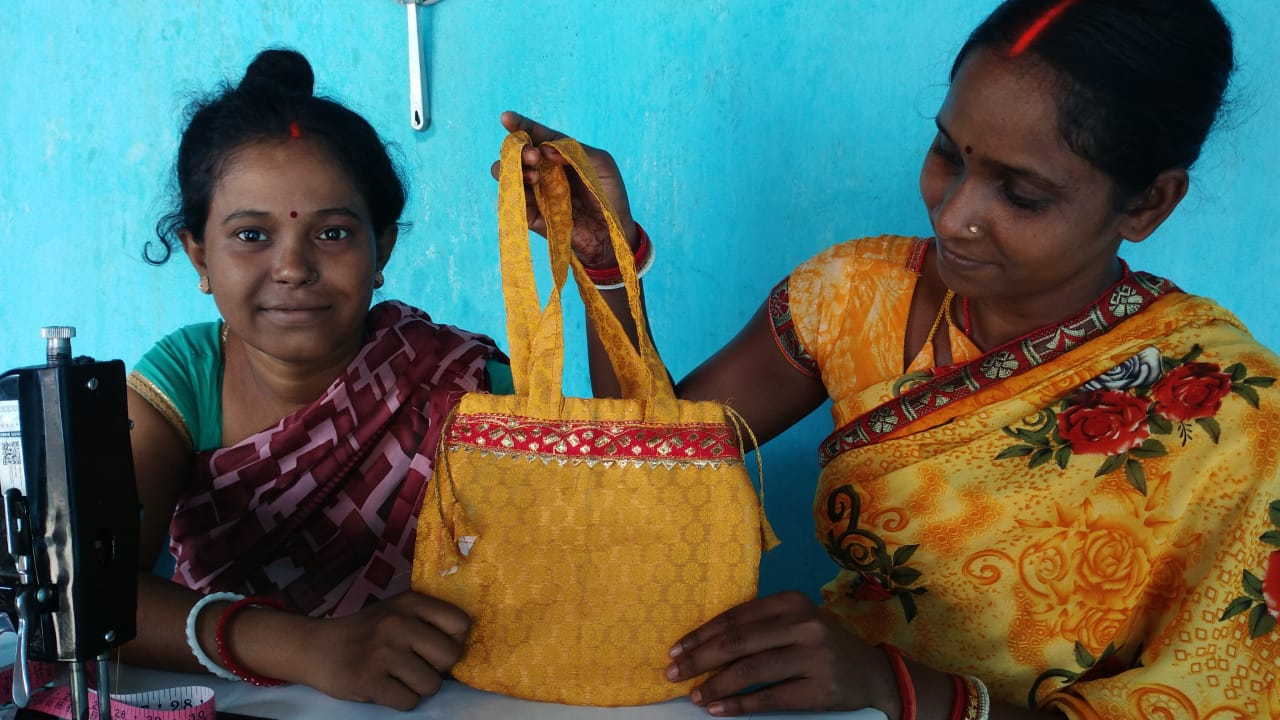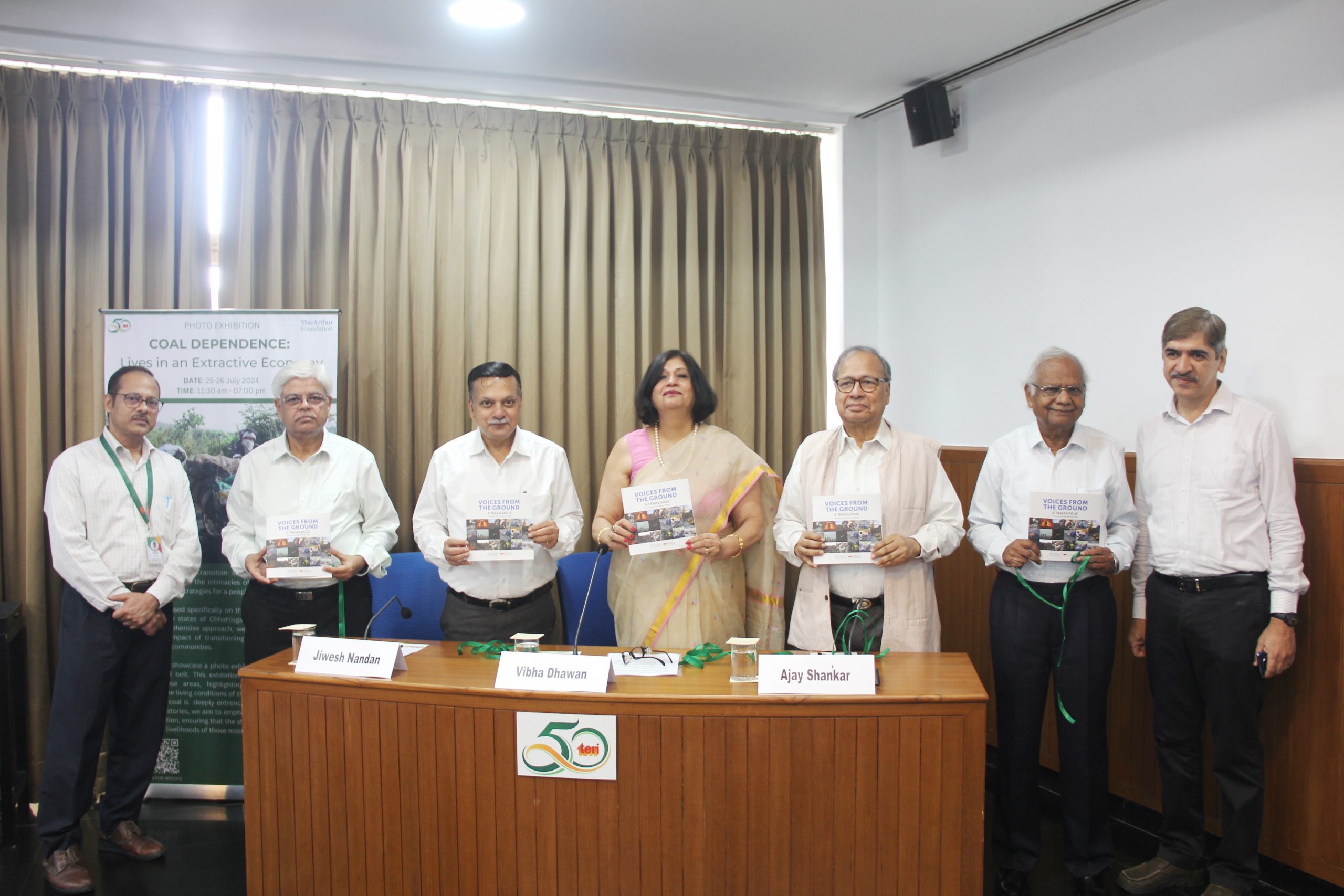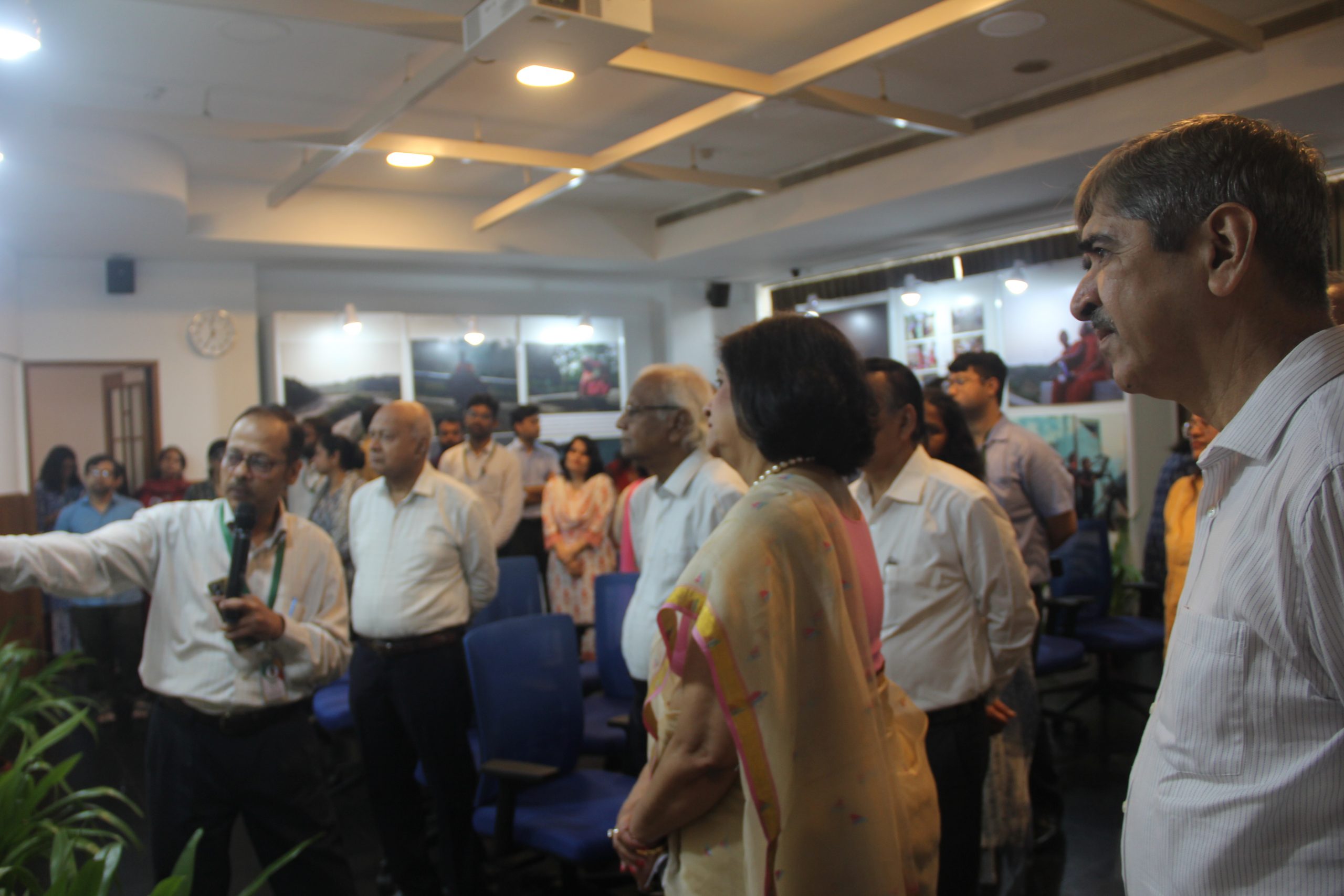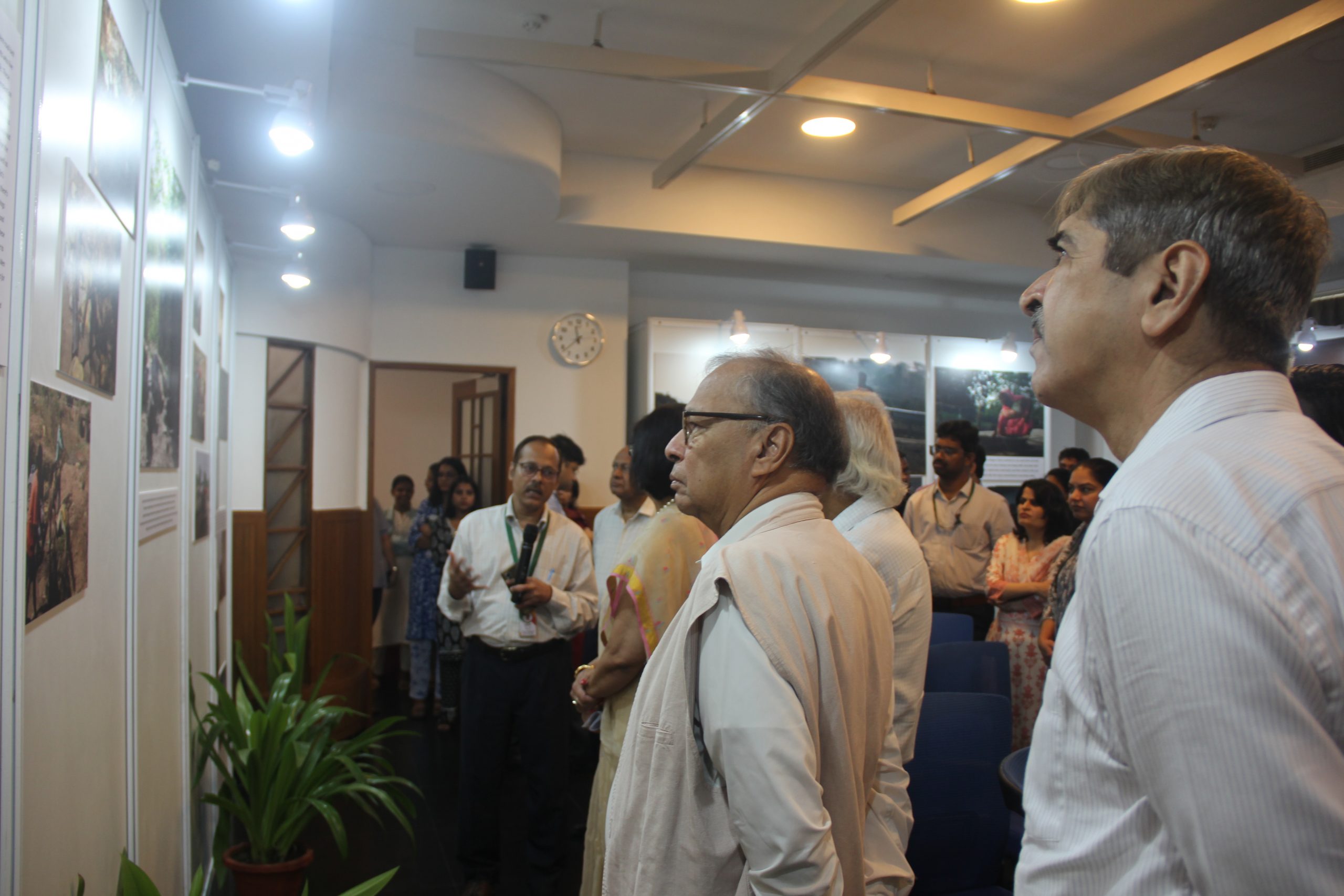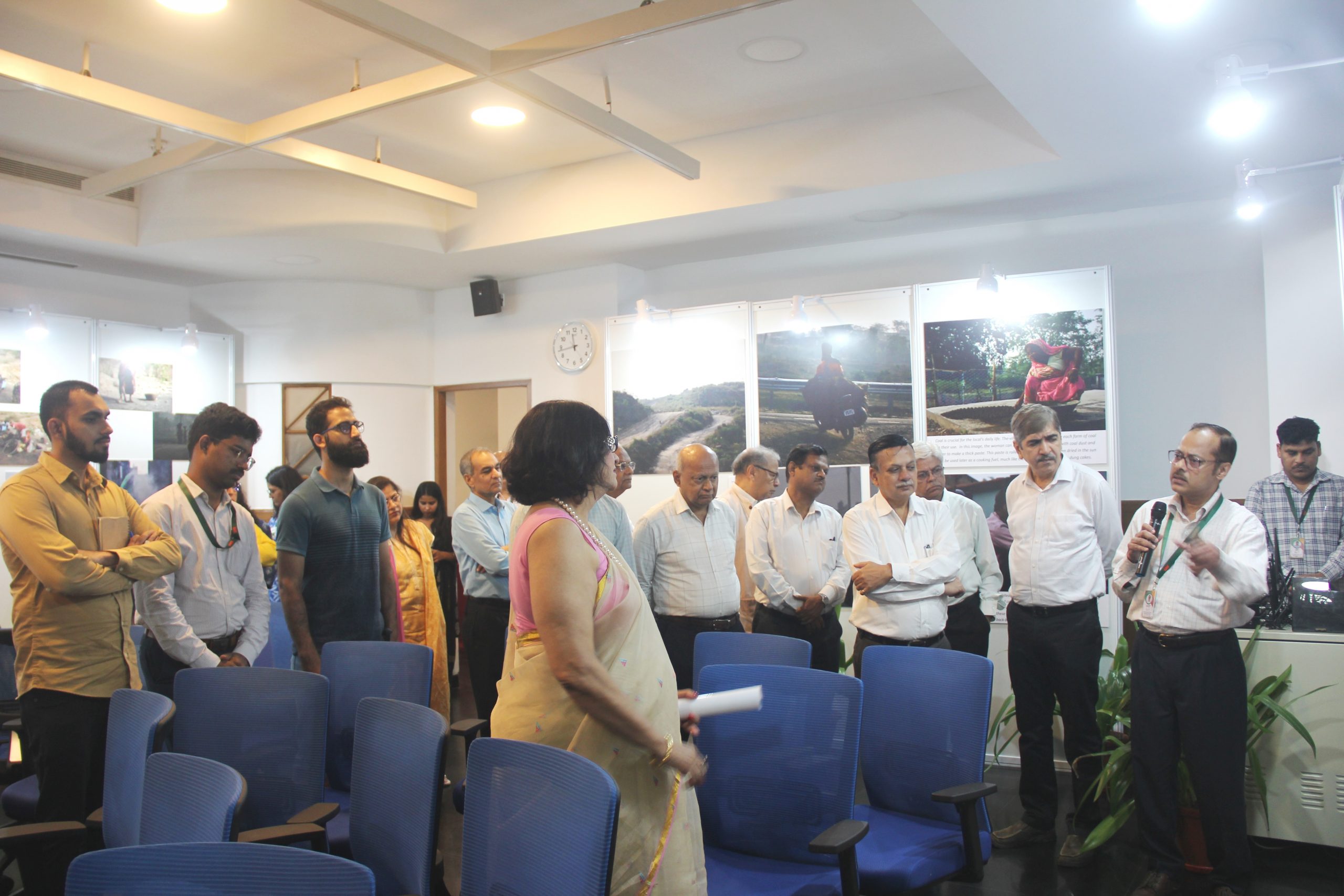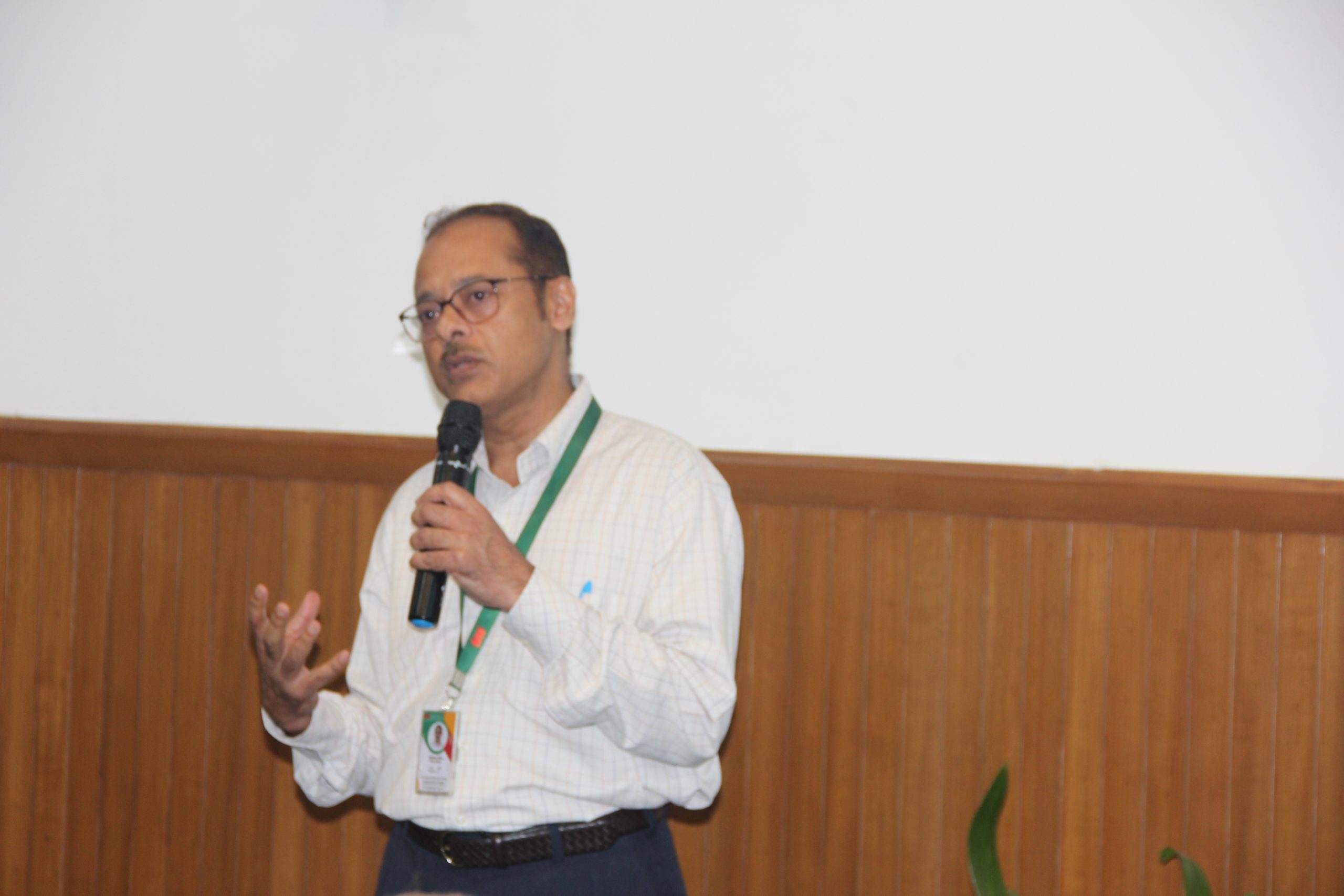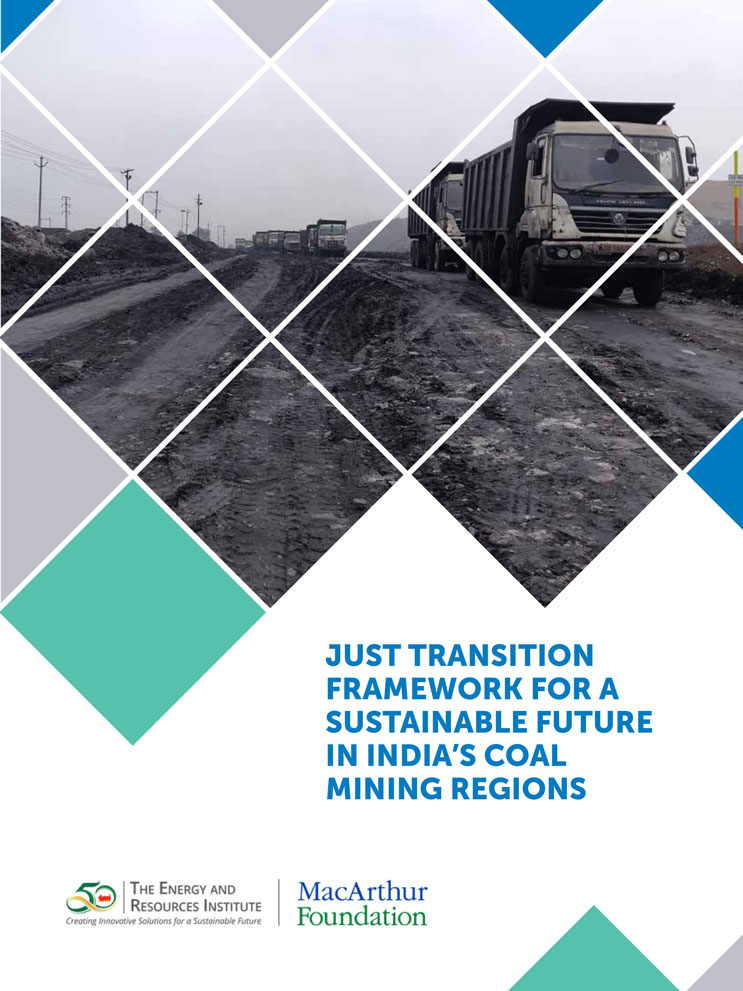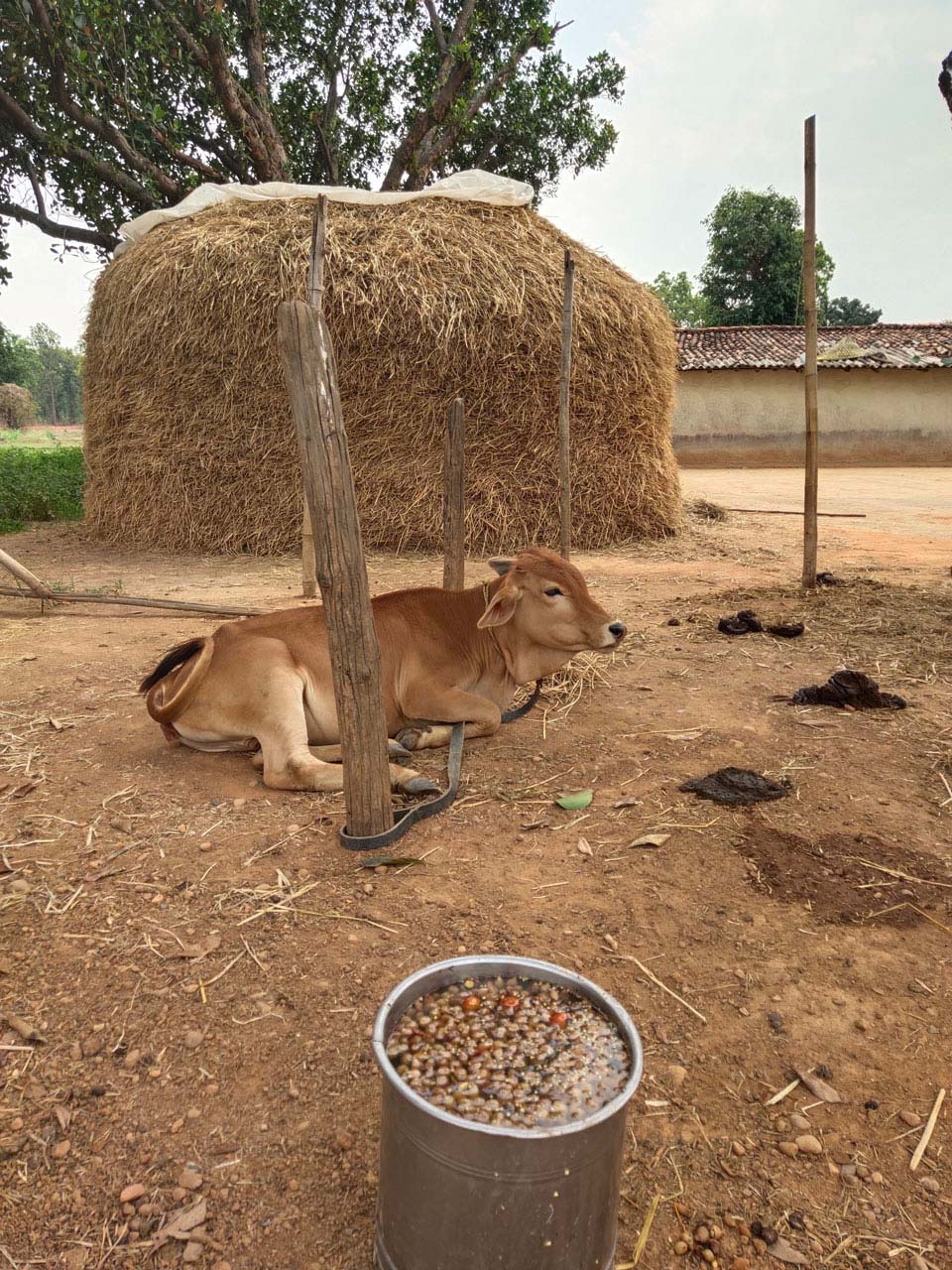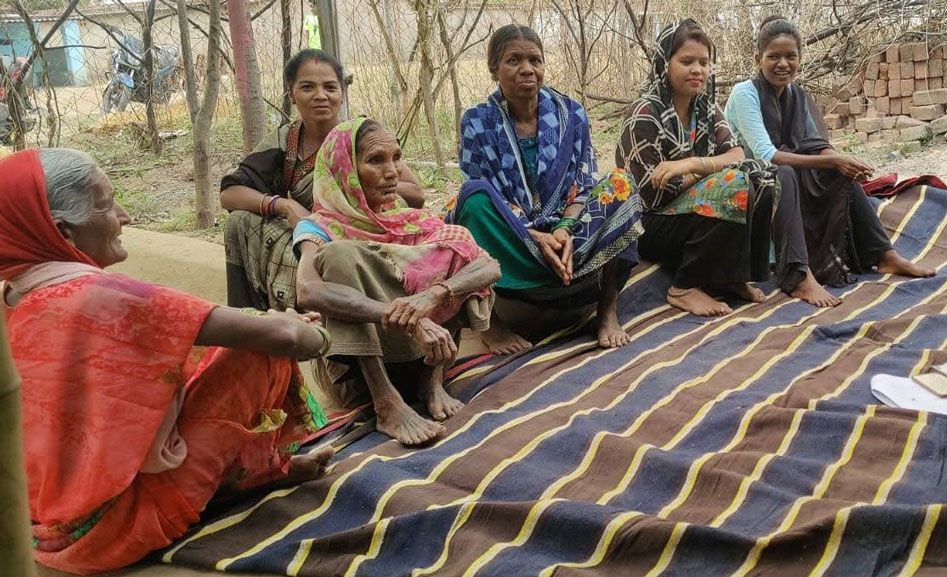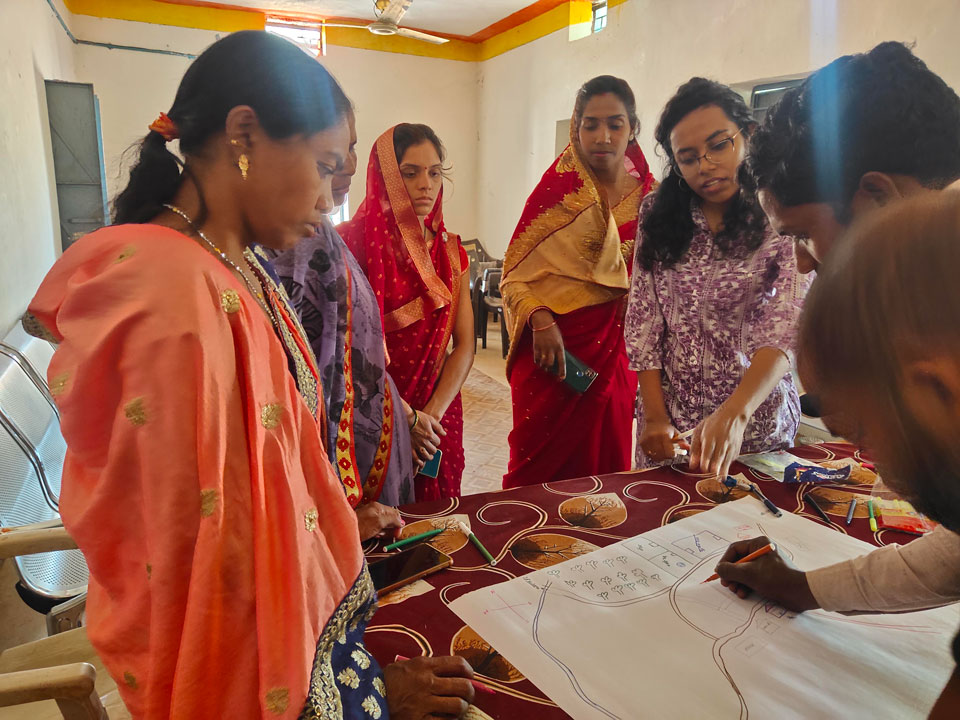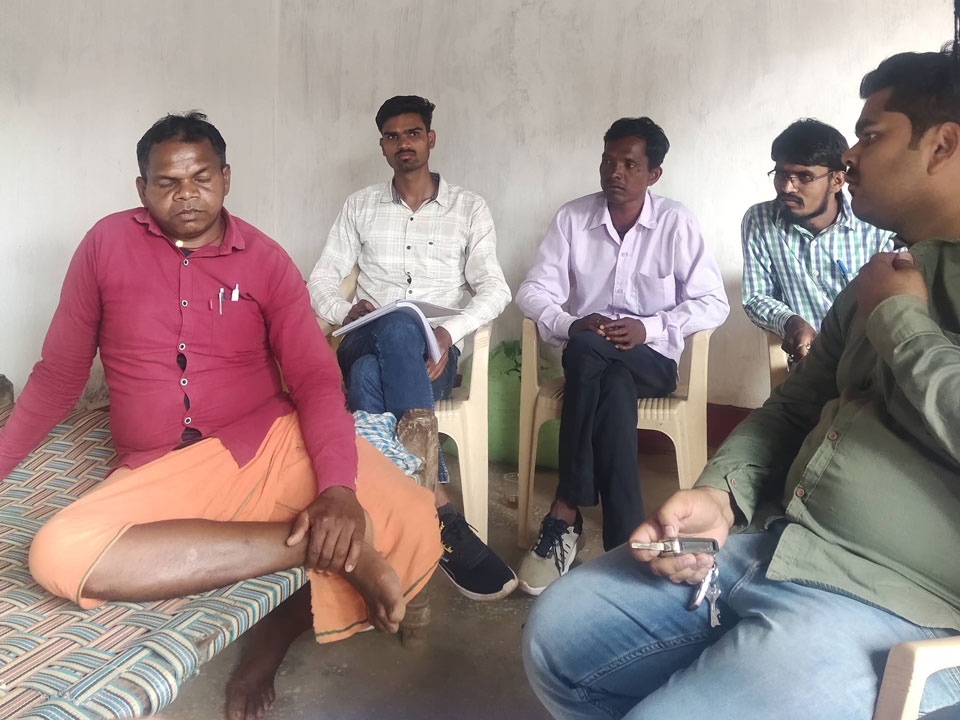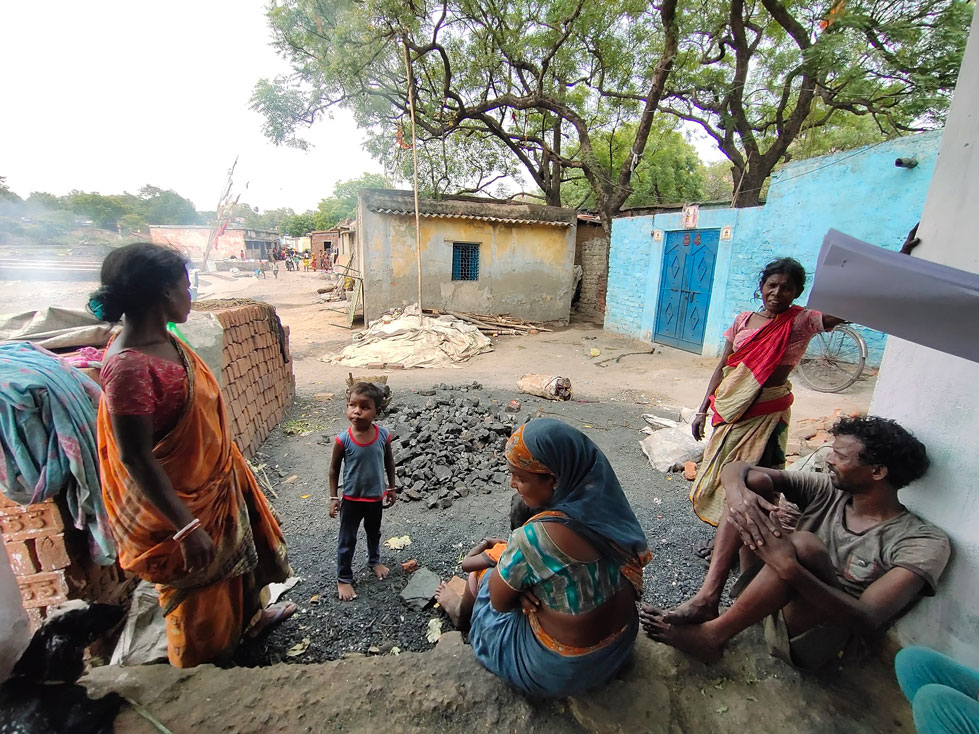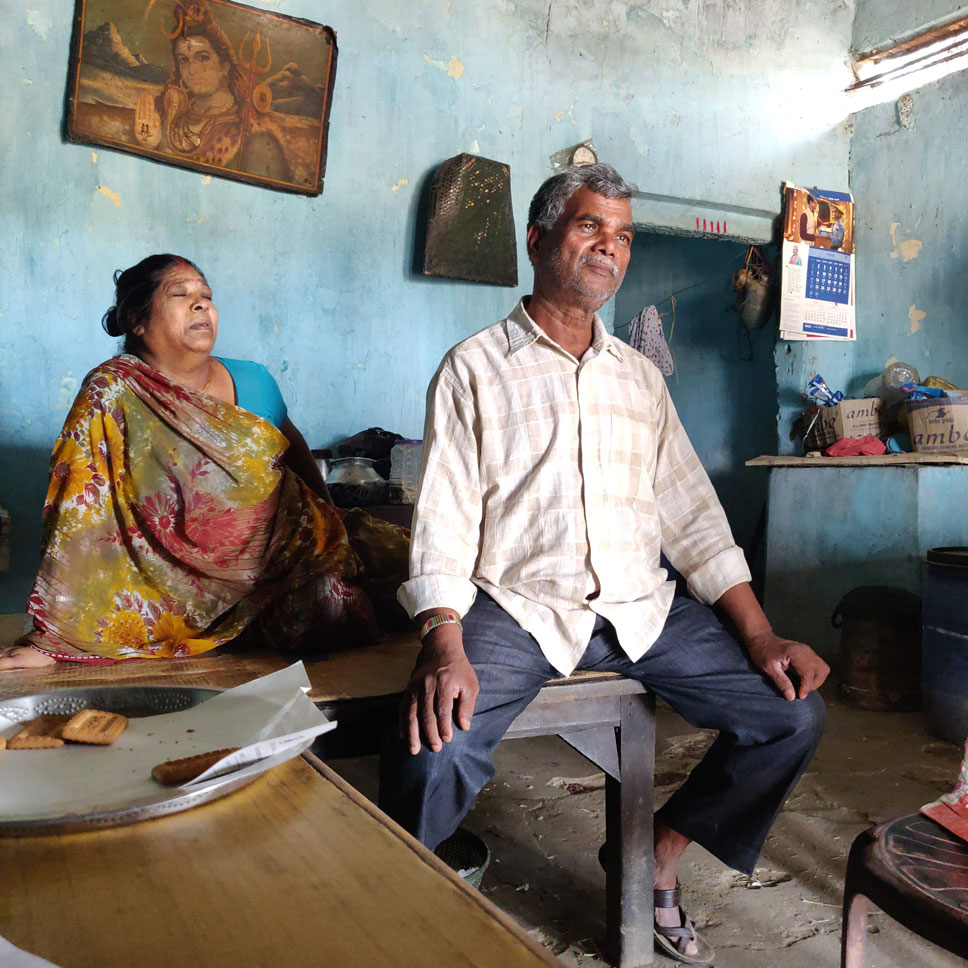Author: Admin
ENERGY EQUITY: A PATHWAY TO JUST TRANSITION
0 Comments
The seventh edition of Vichaar-Vimarsh, TERI’s bi-annual newsletter on just transition, focuses on the critical theme of energy equity. As India advances on its net-zero pathway, ensuring clean, affordable, and reliable energy access for all remains a key challenge and opportunity. This issue highlights how equitable energy access intersects with gender inclusion, public services like education and healthcare, and governance reforms. It also explores the need for economic diversification in coal-dependent regions to ensure no one is left behind. Featuring contributions from practitioners, researchers, and policymakers, the newsletter offers grounded perspectives on shaping a people-centric, inclusive energy transition.
Event Gallery
Understanding the Implication of Coal Transition: The Scenario in Chhattisgarh, Jharkhand, and Odisha
0 Comments
India’s pledge to attain net-zero emissions by 2070 significantly impacts coal-reliant people, especially in the states of Chhattisgarh, Jharkhand, and Odisha. The report “Understanding the Implication of Coal Transition” analyses the socio-economic vulnerabilities resulting from coal mine closures and the ensuing reduction in coal-dependent lifestyles. The study, conducted by The Energy and Resources Institute (TERI) with assistance from the MacArthur Foundation, utilises a mixed-method research strategy comprising community interviews, Focus Group Discussions (FGDs), and socio-economic surveys. This methodology guarantees a thorough evaluation of the complex issues encountered by coal-dependent communities, examining their effects on human capital, natural resources, infrastructure, social networks, and financial stability.
The findings indicate that the shift from coal entails considerable socio-economic upheaval, with job losses and environmental deterioration identified as major issues. The research underscores diminishing employment prospects, insufficient healthcare infrastructure, water pollution, and land degradation as key vulnerabilities exacerbating the problem for coal-dependent communities. These obstacles are classified within the Five Capitals Framework—Human, Natural, Physical, Social, and Financial—each signifying essential aspects of resilience and vulnerability. The report recommends a set of specific initiatives to enable a Just Transition. Essential recommendations encompass reskilling initiatives for displaced workers, financial inclusion strategies to facilitate alternative livelihoods, environmental restoration projects, and gender-sensitive policies to promote inclusive development. The study emphasises the necessity of a participative and equitable transition plan that protects impacted communities while furthering India’s clean energy objectives through the integration of these measures.
Event Gallery
Leave a Reply
PILOT INITIATIVE FOR A PEOPLE-CENTRIC TRANSITION IN GIRIDIH, JHARKHAND
0 Comments
We are proud to share that during the past five months, we’ve made a relentless effort in testing an idea of economic diversification in the coal belt region of Giridih, Jharkhand. We created a pathway for putting our words into action to demonstrate how a successful transition away from fossil fuels could be realized. This pilot was specifically aimed at women and adolescent girls in the Giridih open cast and Kabribad coal mines, whose lives are intrinsically linked with the local coal economy. The target group was females between 18-45 years of age who had basic reading, writing, and numerical skills. The objective was to impart both technical and soft skills to them, enabling them to plan their entrepreneurial journey. Through this intervention, we aimed to make them future-ready by enhancing their skills, which would, in turn, build their confidence and help them establish themselves as self-reliant business entrepreneurs.
As part of the well-thought-out strategy, around 160 women (40 from each gram panchayat—Kongdi and Karharbari from Giridih OC, and Chilga and Tikodih from the Kabribad mining area) were selected and provided with financial literacy training. This was done using workbooks on basic financial concepts such as income, savings, loans, and investments. From this larger group, 80 women were selected to participate in a business generation idea workshop. During this workshop, they brainstormed and discussed potential businesses that could survive and thrive in the region, while also learning about the requisite qualities to sustain these activities. This was followed by a rigorous market mapping exercise to understand the market’s demand-and-supply potential and to gauge the competitive landscape.
Once this was completed, a total of 60 women were selected for the next phase, which involved technical training for business start-ups. During this phase, they were imparted skills to start manufacturing products that have demand in the local market. The women short-listed making products like incense sticks, mops and wipers, home décor items such as cushions and designer bags, as well as beautician training, as potential business ideas. They were provided with machines for collective use to manufacture incense sticks and mops/wipers and taught how to operate these. Similarly, training was provided for stitching designer bags and running beauty parlors. Local trainers were hired to impart the necessary skills to these women.
In the final stage, 49 women came forward to join this collective effort through the formation of Joint Liability Groups (JLGs) at NABARD and started their businesses. Special effort was made to establish connections with the market, vendors were identified, and work orders were procured to create a sustainable supply chain. We are immensely proud to share that five types of enterprises were started by these women: incense stick production, mop and wiper manufacturing, production of home décor items such as handicraft cushions, cloth and jute bag production, and beauty and wellness services. These enterprises include four group enterprises and eight individual start-ups.
The effort put in over these past months has brought to the forefront stories of confidence, success, and the willingness to lead a life different from before—a life of improvement and betterment. The women wake up with a renewed hope of an alternative reality—a reality they are shaping themselves. They have mentioned how this initiative has instilled in them a sense of purpose and drive. We’re glad to note that this newfound voice and dignity have enabled them to make their own decisions and move forward with this pilot initiative.
Event Gallery
Leave a Reply
Coal Dependence: Lives in an Extractive Economy Photo Exhibition
0 Comments
The photo exhibition, “Coal Dependence: Lives in an Extractive Economy,” held from July 25th to 26th, 2024, at the TERI, India Habitat Centre, brought attention to the lives of communities deeply intertwined with the coal economy. Curated as part of the “Just Transition: Understanding and the Implications of Moving Away from Coal” project, supported by the MacArthur Foundation, the exhibition showcased a series of compelling visuals that highlighted the everyday struggles of individuals engaged in coal-related activities. From extraction to transportation, these photographs poignantly captured the vulnerabilities faced by those who rely on coal for their livelihood, emphasizing the urgent need for alternative income opportunities in the shift towards cleaner energy.
Inaugurated by Dr. Vibha Dhawan, Director General of TERI, the event also featured the release of “Voices from the Ground: A Travelogue,” documenting personal stories from India’s coal belt, and a video documentary titled “As She Changes: Seeding People-Centric Transitions in India’s Coal Belt.” The documentary highlighted efforts to empower women in Giridih, Jharkhand, by fostering entrepreneurship and building self-sustaining businesses. Together, these initiatives underscored the importance of adopting a people-centric approach in the energy transition, ensuring that those most affected by the shift from carbon-intensive energy sources are supported and included in the transition to a sustainable future.
Event Gallery
Leave a Reply
LABOUR INFORMALITY IN THE COAL PRODUCING GEOGRAPHIES IN INDIA: ISSUES AND PERSPECTIVES
0 Comments
This edition focuses on the theme of “Labour Informality in the Coal-Producing Geographies in India: Issues and Perspectives,” emphasizing a people-centric transition. We have curated a range of perspectives from academics and researchers to emphasise the pressing requirement for a human-focused strategy in the wake of transition to sustainable energy.
As we look to a future powered by greener sources of energy, aligning with India’s net-zero goals, the need to reduce our reliance on coal is of utmost signfi cance. This change would, however, have a direct impact on informal labourers who rely on coal for their living and frequently lack alternative employment prospects or means of social security. It is imperative to prioritise the inclusion of coal workers, especially those who are informally engaged, to ensure their degree of vulnerability is minimised. The purpose of this issue is to create a sense of urgency and need for collaborative eff orts that directly tackle the diffi culties experienced by those reliant on the coal economy in varied ways.
Event Gallery
Leave a Reply
Just transition framework for a sustainable future in india’s coal mining regions
0 Comments
As the world grapples with the pressing challenges of climate change, there’s an increasing emphasis on transitioning from fossil fuels to sustainable energy sources. India being one of the largest producers of coal – a significant contributor to global carbon emissions – stands at the forefront of this transition.
India’s Unique Position: India, with its vast coal reserves and a significant portion of its energy derived from coal, faces a unique set of challenges and opportunities. The transition is not just about reducing emissions but also about ensuring the socio-economic wellbeing of communities dependent on coal.
The Imperative of a Just Transition: A mere shift from coal to cleaner energy sources isn’t sufficient. The transition must be ‘just,’ ensuring that it is equitable, inclusive, and considers the multifaceted impacts on workers, communities, and the environment.
Purpose of the Report: This report delves into the principles, and strategies to ensure a Just Transition in India’s coal sector and suggests a Just Transition Framework for India’s Coal Mining Sector. Drawing from historical contexts, global best practices, and India’s unique challenges, it provides a comprehensive roadmap for stakeholders at all levels of governance in India.
Event Gallery
GROUND SCENARIO IN SARANGIJHARIA IN SUNDARGARH (ODISHA) A REFLECTION ON POSSIBILITIES AHEAD
By Ayushi Saharan, MA Sustainable Development Practice student at TERI SAS, based on her field visits during an internship at TERI ![]()
![]()
0 Comments
As we arrived at Sarangjharia, a village about 12 kilometers away from coal mine, we found the locals gathered around a tree with baskets in their hands, waiting for a man climbing the tree in front of us to get them some jackfruit. This is symbolic of the quiet and simple life that people live in the village which is not yet claimed by any mining companies and hence the area remained untouched by any major industries as yet and the village coexist with nature.
According to the villagers, while the majority are engaged in agriculture, one-fourth of the residents are engaged in temporary labour work at MCL. The fact that most of the mine related work is outsourced, the local labour force is drawn from the surrounding villages by the contractors. Given the short duration of employment, fear of exclusion and losing the chances of wages earning opportunity, and due to the lack of alternative employment opportunities around, locals often accept what they are offered. Ironically the poor and uneducated labour force are hardly aware of the nitty gritty of CMPF (Coal Mine Provident Fund) and neither do they have the courage to to inquire about CMPF funds and other deductions from their wages during this short-term engagement by the contractors. Owing to blocked opportunities the labour force complies with norms imposed by the contractors and hardly get a chance to voice their grievances. In the informal labour sector they lack any safety net and hence remains vulnerable. Basic rights of rural populace in and around the coal belt are often denied and dignity gets compromised. It raises questions about access to fair wages, safety net, social security system, quality education and health opportunity, and access to healthy work environment. Over dependence on coal and mono-industry also creates a monopoly and in a way that it restricts growth of other livelihood choices and its market promotion. A balanced view of diversified livelihood options creates market opportunities, enterprises, offers greater choices and competition across multiple players who engage labour and this also provides a space for bargaining and an urge for fairer practices in labour engagement.
An important alternative source of income for the locals comes from forests. Collection of mahua flowers and kendu leaves fetches households an average income of 10,000-30,000 rupees within 1-2 months. The collection is usually done by women and children, bundles are made by men and collected by the forest department for making secondary forest based products.
Agriculture, however, is the main source of income of the village. But it has suffered primarily due to labour unavailability. While the locals can offer 200 rupees as daily wage to work on the fields, MCL offices offer 300 rupees. Therefore, residents prefer to engage in labour work rather than working on fields. However, the older generation and women play an active role in keeping agriculture alive in the village. The staple crops sown and produced are corn, rice, and seasonal vegetables. The fields are rainfed, and surplus is sold to the local weekly market. While schemes like MGNREGA is functional in the village, Ujjwala, Swacch Bharat, Ayushman Bharat, PMJAY, health card issued by state government, and other policies linked to farmer’s welfare doesn’t seem to be reaching the people in the area. In a way, people lack the knowledge about several such schemes and hence could not benefit from these schemes.
Today’s youth in these villages are often allured to pick up non-agricultural wage labour particularly in any coal dependent industry settings. Young boys of Sarangijharia are also known to migrate in groups to cities like Goa for work in fishery sector, work for six to seven months, and return back with the earned income (about 30000-40000) only to spend it away on alcohol. Therefore, the money earned is hardly invested in the region in a productive manner.
The problem of alcoholism is said to be further aggravated by the mining activities given the influx of migrant truck drivers from different states who drive up the demand for alcohol. In the village itself the residents indicated that some households make alcohol using chemicals to derive some additional income. Several cases of loss of young lives owing to consumption of country made liquor have been reported.
Coal industry, MCL in this case and DMF can play crucial role in mapping vulnerable pockets, carrying out a socioeconomic baseline, assessing skill, resource and information gaps, and develop a blueprint in consultation with the credible research institutes and development practitioners to enhance the living condition of people living in and around the coal belt. As part of the Just Transition initiative, it would be logical to impart new skills, enhance sustainable agriculture, demonstrate and encourage adoption of greener practices in manufacturing of local products, and promote diversified livelihood strategy, enhance financial inclusion, health awareness and safety nets. All in all, such measures will help minimize vulnerability, build resilience and improve the quality of life of the poor people living in and around the coal belt. The plans must include those who are engaged in coal sector as contractual labourers and their families but also others who are daily wage earners, agricultural workers, who depend on others’ land and also other socially backward sections who often get alienated or left behind due to their backwardness.
Event Gallery
Leave a Reply
WHY FACTOR IN WOMEN IN A JUST TRANSITION FRAMEWORK?
By Arpita Victor, MA Sustainable Development Practice student at TERI SAS, based on her field visits during an internship at TERI ![]()
![]()
0 Comments
Early in 2022 four women were among five people who died when a series of mines collapsed in Dhanbad,Jharkhand. They were illegally mining coal in the abandoned mines of Bharat Coking Coal and Eastern Coalfields Limited (Times of India, 2022). Jharkhand’s Jharia coalfields also see the involvement of many women in illegal coal mining under coal mafias that run in the abandoned mines. It is hard to imagine people choosing to work in conditions of bondage because they had a choice, especially women and young children (Thadani, 2022). Whether they are drawn to the pay or whether they are coerced into such conditions of labour- it should be a matter of concern for administrators and public authorities that numerous people, among them women and children work illegally in abandoned mines as bonded labour under local mafia. Even though the ban on women working in underground mines was lifted in 2019 (ANI, 2019), the official numbers do not reflect a change in the proportion of women mine workers (CIL, 2015; CIL, 2020). This means that the large numbers of women directly involved in mining activities are not accounted for in these numbers and thus the nature of
their engagement is informal and/or illegal. This nature of engagement implies a lack of social security offered alongside employment which is bound to have an adverse impact on their health and economic outcomes given the physical conditions of work are far from ideal.
Evidence from the ground in Odisha
While women being directly involved in coal related work is more common in Jharkhand, the same is not the case in other coal producing states, especially Odisha. This does not mean that women do not still get differentially impacted by coal mining. Studies in Odisha’s coal mining belt have shown that women were accustomed to maintaining kitchen gardens to supplement their families’ diets with vegetables and other such produce of choice. This would give them a way to supplement the household’s needs in kind. Having lost their land for kitchen farms in the process of displacement, these women lost their means of agency in the household, and are now dependent on their husband’s income which gives him greater say in what choices are to be made for food in the home. With the potential closure of coal mines it is most likely that the sole breadwinners of the homes will lose their income, making the women’s position domestically even more precarious, given how it is their responsibility for ensuring the nutrition needs of the household is met. Being a displaced female in the vicinity of coal mines is a significant risk factor for unfavourable life outcomes. Sundargarh in Odisha also has a high number of unmarried mothers and an increased vulnerability to such exploitation is linked to women displaced by coal mining activities in addition to having lower levels of education/literacy among local women in the area. Alcoholism is also rampant among the local male population forming a grave indicator of domestic violence and abuse. Women are also affected by coal mining in terms of livelihood not only through the loss of land based livelihoods after displacement, but also when families that do retain their land are affected by the by-products of mining activities since agriculture is more
or less the exclusive domain of women. Coal dust settling on paddy crops (which are the only crop cultivated and done so solely by women) affects the quality of the grain and prevents its sale in the market. The runoff from mines pollutes surface water sources and tanks that the locals use for bathing and washing purposes since it is common to not have running water in homes. This again impacts the fields which women routinely tend to by contaminating water with high mineral and ash content (CIRTD & CPR, 2020). Local women in Hemgir district suspect the bad water quality to be responsible for infections and putting pregnant women and unborn foetuses at risk of complications. Such risks take a higher toll on the locals than it should because they need to go all the way to Sundargarh city for proper health checkups. The groundwater levels have also fallen low due to mining activities and this again involves women because it is their responsibility to ensure there is enough water in the house for consumption (CIRTD & CPR, 2020).
Building a gender equitable future
Thus, it is imperative that any plan to move away from coal must factor in the already precarious situation of women associated with or affected by coal mining, since coal mine closure is more likely than not to worsen existing local social scenarios. While Coal India Limited plans to scale domestic coal production up by 2030 to ensure India’s self-sufficiency, this plan is going to be accompanied by the phasing out of many loss making mines (Bhushan, 2022). As 75 percent of the CIL’s profits come from 35 large mines (Bhushan, 2022), the PSU is likely to phase out the others or auction them to private bidders. To give an idea of the severity of the situation for coal labour, 40 percent of labour is engaged in the remaining mines that are loss making (ibid.) and thus most likely to cease operations putting entire communities out of employment. The threat to coal dependent communities and by extension, women and children is imminent and needs to be addressed on a priority basis. This will involve measures like a prioritisation of healthcare schemes in mining areas in addition to a strengthening of the Pradhan Mantri Khanij Kalyan Yojana through a robust use of District Mineral Funds. Field experience in Hemgir showed that rural women were eager to learn and skill themselves. They had SHGs but they lacked the knowledge to leveraging the platform to initiate entrepreneurial activities. Intervention before it is too late in terms of families getting displaced again or before coal mines close is crucial to enable local women to gain a say in their means of income and agency in the house and community.
References
- ANI. (2019, February 4). Now, women allowed to work in underground mines. Business Standard. Retrieved September 12, 2022, from https://www.businessstandard.com/article/news-ani/now-women-allowedto-work-in-underground-mines-119020400714_1.html
- Bhushan, C. (2022, April 28). Coal consumption in India: We are already late on fair green transition. The Financial Express. Retrieved September 12, 2022, from https://www.financialexpress.com/opinion/thereal-mainstream-we-are-already-late-on-fair-greentransition/2505806/
- Chadha, R., & Kapoor, I. (2022, January 10). District Mineral Foundation Funds: Evaluating the Performance. Centre for Social and Economic Progress. Retrieved September 12, 2022, from https://csep.org/wp-content/uploads/2022/01/District-MineralFoundation-Funds-Evaluating-the-Performance.pdf
- CIL. (2015). ANNUAL REPORT. Ministry of Coal. Retrieved September 12, 2022, from https://coal.gov.in/sites/default/files/2019-11/chap14AnnualReport1415en.pdf
- CIL. (2020). EMPOWERMENT OF WOMEN. Ministry of Coal. Retrieved September 12, 2022, from https://coal.gov.in/sites/default/files/2020-09/Chapter14-en.pdf
- CIRTD & CPR. (2020). Closing the enforcement gap: Groundtruthing of environmental violations in Sundargarh, Odisha. Centre for Policy Research. Retrieved September 12, 2022, from https://cprindia.org/wp-content/uploads/2021/12/SundargarhReport-for-Web-Version-Final-Revised.pdf
- Dhaatri. (2016). Home. OHCHR. Retrieved September 12, 2022, from https://www.google.com/l?sa=t&rct=j&q=&esrc=s&source=web&cd=&cad=rja&uact=8&ved=2ahUKEwjlnvysgvz5AhWTF7cAHeirDgwQF noECAMQAw&url=https%3A%2F%2Fwww.ohchr.org%2Fsites%2Fdefault%2Ffiles%2FDocuments%2FHRBodies%2FCRC%2FDiscussions%2F2016%2FDhaatri.docx&usg=AOv
- Nayak, S. (2020, May 16). Dispossessed Women’s Work : The Case of Talcher Coalfields of Odisha. Economic and Political Weekly |. Retrieved September 12, 2022,from https://www.epw.in/journal/2020/20/reviewwomens-studies/dispossessed-womens-work.html
- Thadani, A. (2022, June 14). In Photos: Mafias, a Ruthless Appetite for Coal and the Bonded Mine Workers of Jharia. The Wire. Retrieved September 12, 2022, from https://thewire.in/labour/in-photosmafias-a-ruthless-appetite-for-coal-and-the-bondedmine-workers-of-jharia
- Times of India. (2022, February 1). Jharkhand: 4 women among 5 coal-pickers dead as 3 abandoned mines collapse during illegal mining | Ranchi News. Times of India. Retrieved September 12, 2022, from https://timesofindia.indiatimes.com/city/ranchi/many-feared-trapped-as-3-abandoned-coal-minescollapse-in-jharkhand-during-illegal-mining/articleshow/89275169.cms
Event Gallery
Leave a Reply
Local NGO perspective
By Dr Jayanta Mitra, Senior Fellow TERI ![]()
![]()
0 Comments
The thought of transition drives one to think of the immediate impact on life and livelihood, local economy, businesses, and the possibilities ahead. Coal phase-out will hit the local people and the labour force hard as they are excessively dependent on coal. Hence, detailed PRA (participatory rural appraisal) and micro-level livelihood planning are essential. A skill centre needs to be established or convert certain industrial facilities into training hubs that local people can access and gain from it. Advocacy with State and industry is crucial.
Agriculture and agri-allied activities, adoption of high-value agricultural practice, organic vegetable hub promotion with market linkage (through a tie-up with NABARD), aggregation centre and end to end solution (seeds to market), etc. would be the proposed action points to minimize potential risks in the wake of coal phase-out. This would address food security challenges and check distressed migration.
Youth entrepreneurship (market assessment, generating micro-enterprise ideas, input supply, value addition, market negotiation) promotion is the key towards promoting a vibrant local economy.
Jharkhand is known for its abundant forest land and forest produce. Technology should be leveraged meaningfully to generate business. For instance, the installation of an oil expeller (could be solar operated) can help market oil from locally available oil seeds and achieve a scale that can engage local poor and tribal communities who are dependent on the forest. Along with this, mobilization of farmers collectives, formation, and strengthening of FPOs, institutional linkages, digital solutions, multi-stakeholder coalition (GO-NGO-CSR-Technical/Research institute) for effective advisory, disease control, market negotiation, etc. Further, existing local or artisanal knowledge and skills need to be mapped and marketed around that may be created for gainful engagement of the local populace.
Systematic documentation of the existing and perceived challenges in the context of coal transition and open multi-stakeholder dialogue on the theme may enable in comprehending the complexity and map opportunities and possible action points.
Event Gallery
Leave a Reply
Old contractors’ diary
By Dr Jayanta Mitra, Senior Fellow TERI ![]()
![]()
0 Comments
Way back in 1996, FaguChaudhury used to work as a contractor for CCL (Rajrappa Project) and used to engage local youth as labourers primarily for loading coal. He narrated how the local populace was solely dependent on coal only and was the only visible avenue to make quick money as opposed to rain-fed agriculture and return therein from the meager land. Even 3-4 years ago one could see trucks lining up around colliery belts and at least 1500 labor could be seen busy loading coal. This has become an occasional affair and the KantaGhar, once a Today owing to mine closure and or relatively lesser mining and transporting coal to steel industry townships around through rail route reduced opportunities for local labour.
Dhyanesh was a labour contractor before and used to earn 2-4 K per week but in the last 3 years, he stopped doing this job and opted for farming as he owns the land. Earlier 56 mines were operational and except 3 the rest closed down. In the next 5 years, Karma Project mines will also close down. Consequently, the labour force shifted to agricultural occupation, and those who have less/no land, migrated to cities in search of jobs. Overall unemployment increased and its manifestation may be seen with increased incidence of looting on roadways and chain snatching. Sense of insecurity is rising. Hence the revival of the local economy is a necessity and it can be achieved through:
- Dona pattal (saal plate making) and market linkages
- Oil extraction from mahua seeds, karach, kusum (forest produce) and marketing of such products
- Forming collectives for kendupatta collection and bidi making and establishing a supply chain
Md. Hakim Ansari remarked “Labour contracting was a lucrative option earlier”. He used to make good money by the road selling coal loading and make labor payments to the tune of Rs. 1 lakh every month but after 2016 business is down. He opined that due to lack of improved technology the coal production has declined and he was forced to think of an alternative means of livelihood in an environment where people generally hardly think beyond coal and other opportunities appear blocked. He later opted for picking school children and dropping them at school and home and earns about 10,000 a month now. Normally agricultural land is leased out for farming and one gets enough return to meet one’s food security needs.
Questions that emerge: Can there be alternative livelihood choices in the coal belt where mines closure or reduced mining impacting lives? Whether answer lies in inclusive planning?



